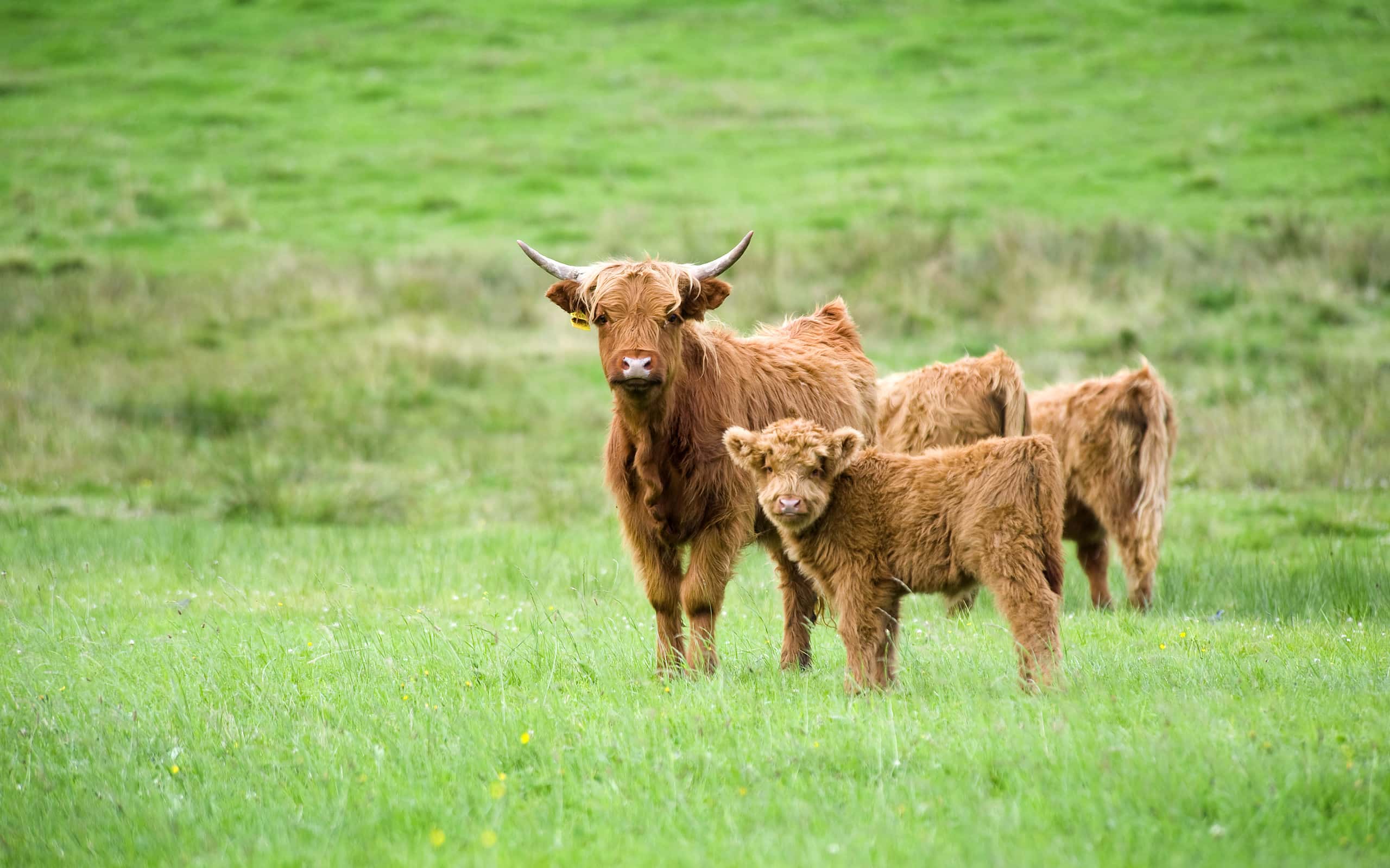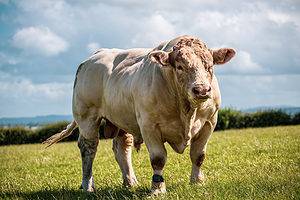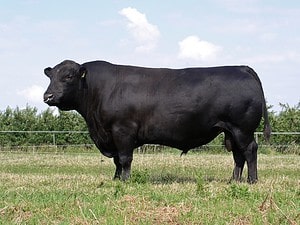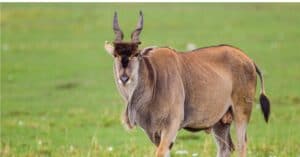For centuries man has kept track of their grazing animals by hanging bells around their necks. One of the earliest discoveries is the remains of 5,000-year-old cow pottery bells discovered in China and later in Europe from Germany in the 1300s. The most valuable cows in the herd wore them, and there are other determinants that we will discover as we take a look at the 8 reasons cows wear bells around their necks. In fact, a domesticated cow may wear a bell to show it belongs to someone.
The most common place to see cows wearing bells is Switzerland where the land is hilly and cows roam freely. As a result, cows will graze across large expanses of land, and when they are wearing a bell, their owners can get an idea of where they are at all times. Bells are especially useful for those who don’t have fenced-in property. In some areas of Europe, such as the alpine regions where cows aren’t always within view, the sound of the bells gives farmers a sense of well-being knowing they are nearby. However, calves do not wear bells as they tend to stay close to their mothers. This practice isn’t as common in America as it is in other parts of the world. In this article, we examine the 8 reasons cows wear bells around their necks which include:
- Tracking cows as they graze
- Warding off evil
- Warding off predators
- Identification of the best milk producers
- Participation in ceremonial events
- Warning people of their presence
- In the event of an emergency
- Differentiation from neighbor’s cows
Tracking Cows as They Graze
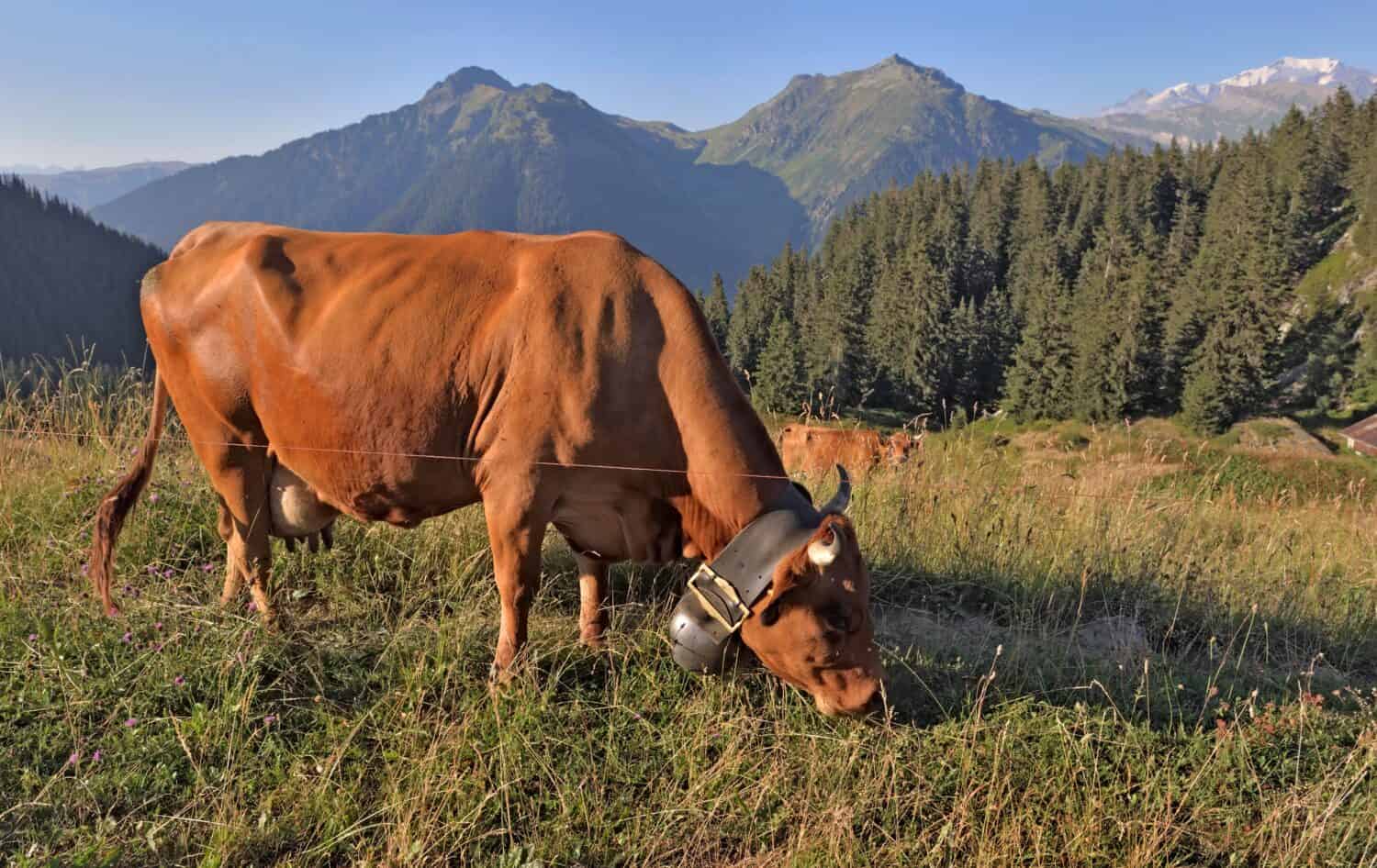
Cows can roam up to 10 miles in one day when seeking food.
©sanddebeautheil/Shutterstock.com
Bells have been a custom in use for many centuries to aid in the location of cows while they are grazing on hilly expanses where farmers can easily lose sight of them. Cows can wander off in search of food and can cover quite a bit of the area very quickly. They are especially useful on large farms where there could be hundreds of cows grazing on many acres of land.
Warding Off Evil
In the 15th century, people believed cowbells warded off sickness and evil and attracted goodness. As cows wearing bells roamed the area, they would purify it with the sound of the bells. In addition, cowbells reminded farmers of the sound of church bells and they were symbols of good luck.
Warding Off Predators
Cowbells scare away predators such as bobcats, coyotes, and dogs. Their sound is quite loud and travels over long distances which also sends an alarm to other animals in the area.
Identification of the Best Milk Producers
Bells are a status symbol of milk productivity. The size and sound of the cowbell display unique information about that cow. Therefore, the highest-ranking cows wear the largest bells. Cows graze in high alpine meadows in Western Europe after the snow melts in spring. A procession through the villages celebrates their late-summer return. Accordingly, the best milk-producing cow is in the lead.
Participation of Cows in Ceremonial Events
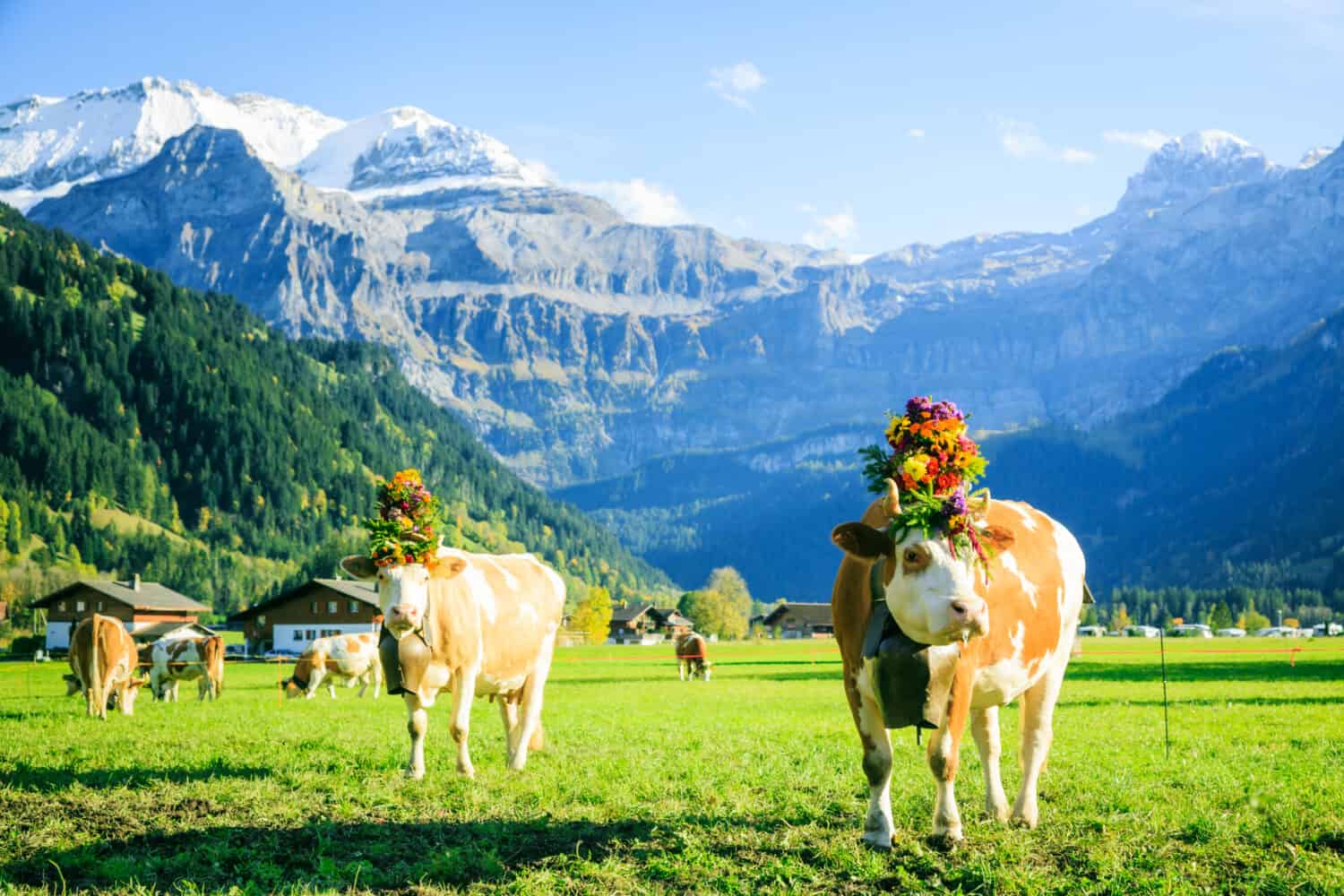
Welcoming the cows home by celebrating a season of alpine grazing at the end of summer.
©nullplus/Shutterstock.com
Cows wear ornately decorated cowbells during festivals and parades. For example, at the end of summer, they are celebrated and decorated with floral crowns and religious symbols.
Warning People of their Presence
Bells alert others of a cow’s existence when crossing into their territory. For example, cows will charge if they feel threatened, become startled, or when protecting their young. Bulls particularly become aggressive when protecting their territory. In fact, cows can weigh an average of 1,400 pounds and may cause a lot of damage when alarmed. They are also fast and can reach speeds of up to 25 miles per hour. Bells provide useful warnings for traveling hikers, cyclists, and joggers to alert them of their presence.
In the Event of An Emergency
Cowbells are useful when bad weather or a disaster strikes to quickly find cows to bring them to safety. During an emergency, cows may become alarmed and could scatter and get lost. Trying to locate them could take precious time during a disaster without the sound of a bell.
Differentiation from Neighbor’s Cows
Bells are used to identify cows from others grazing in the area. This is especially useful when farmers have unfenced land and cows comingle with the neighbor’s cows.
The History of Cow Bells
Building a fence to keep cows in is an expensive endeavor, using cow bells allows farmers the ability to find their herd for a minimal cost. Many years ago, cowbells were crafted from pottery or wood. Eventually, they were made from metal such as copper, brass, bronze, or iron and used with collars of wood fibers or leather. Iron was originally used to make bells, but in the 19th century, brass became the preferred metal. As a result, it produced a louder sound able to carry greater distances in the mountains of Switzerland.
Swiss Culture
Cowbells have a long cultural significance in Swiss history. Train stations and airports play cowbell recordings. Tourism literature features the Swiss dairy tradition and identity. In addition, businesses, chalets, and homes display them as decorations. The cow who wears the largest bell is the queen of the herd according to some. In fact, trophies and awards in sporting events incorporate cowbells.
How to Make Bells
Bells are formed in a cast, hammered, and shaped to achieve the desired pitch, their sound is determined by density and shape. Hand-etched decorations adorn the surface and include Swiss crosses, flowers, and images of cows and then tuned and brightly polished. The two main types of cowbells include:
Glocken
- Used for ceremonies and as souvenirs
- 5-30 centimeters in size
- Engraved or embossed artwork
- Bright tone
- Pear or round shaped with a top handle
Treicheln
- Most commonly worn by grazing cows
- 15-25 centimeters in size
- Made from hammered brass
- Deep, rich tone
- Acorn shaped
Do Bells Cause Damage to Cows?
Bells are heavy, weighing around five pounds, and are loud. Hence, some say they cause weight loss, hearing loss, and other health issues in cows. Even more, cows wearing bells chew less. In fact, cows are more sensitive to sound than humans. For example, metal cowbells can produce more than 113 decibels. This is loud enough to not only bother the cow, but also other farm animals, birds, and neighboring farm inhabitants. In addition, it’s important to check their collars periodically to ensure they aren’t developing sores or other injuries from rubbing.
Other Animals that Wear Bells
Pigs, goats, sheep, and reindeer also wear bells for the 8 reasons cows wear bells around their necks. This practice is common in areas such as Latin America, Mediterranean countries, Western Europe, Africa, and Asia. In fact, some domestic animals also wear bells such as cats to warn birds of their presence and dogs when on hikes to be easily located if they chase an animal or get ahead of their human. Additionally, bikers use them when riding through the wilderness to scare bears and other wild animals.
Alternatives to Wearing Bells
Cowbells aren’t in use as much today, instead, farmers use standard or electric fencing, ear tags, or technology such as GPS to track and find livestock.
In Conclusion, the 8 Reasons Cows Wear Bells Around Their Necks
Cows have worn bells for centuries as a means of identification and for tracking as we have discussed in the 8 reasons cows wear bells around their necks. They are a valuable resource for farmers as they provide dairy, meat, and hides. Cows might indeed suffer harmful effects when wearing bells, it isn’t really known and is a controversial topic. However, some people are using more modern and humane methods of keeping track of their herds. In fact, cowbells aren’t only for cows, they are also used with other animals and by humans.
| Reasons Cows Wear Bells | Examples |
|---|---|
| Tracking cows as they graze | Cows like to roam around as they graze. |
| Warding off evil | Bells warded off sickness and attracted goodness. |
| Warding off predators | The noise scares predators. |
| Identification of the best milk producers | The highest milk producer is easily identified. |
| Participation in ceremonial events | Cows are honored at celebrations. |
| Warning people of their presence | To provide audible warnings to others. |
| In the event of an emergency | To locate in the event of an emergency. |
| Differentiation from neighbor’s cows | To identify other cows in the area. |
Thank you for reading! Have some feedback for us? Contact the AZ Animals editorial team.

